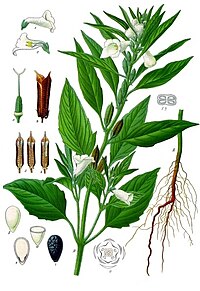
Photo from wikipedia
Synchronisation of fruiting phenology with disperser activities is an important component of plant adaptation to seed dispersal mutualisms. Although most previous studies have exclusively evaluated the effects of fruiting phenology… Click to show full abstract
Synchronisation of fruiting phenology with disperser activities is an important component of plant adaptation to seed dispersal mutualisms. Although most previous studies have exclusively evaluated the effects of fruiting phenology on seed removal rate, seed dispersal effectiveness is determined by both the number of dispersed seeds (quantitative effectiveness) and the probability of a dispersed seed becomes an adults (qualitative effectiveness). Therefore, the adaptive significance of fruiting phenology should be assessed for both components of dispersal effectiveness. This study investigates the adaptive significance of fruiting phenology for two ant-dispersed sedges, Carex lanceolata and C. tristachya. Because C. lanceolata is known to require a longer seed dispersal distance than C. tristachya, we hypothesized that C. lanceolata produces seeds when high qualitative dispersal effectiveness can be achieved, while C. tristachya bears seeds when seed disperser ants are abundant to give priority to quantitative dispersal effectiveness. Field observations of ant activity around the sedges revealed that the relative abundance of ant species with the longest seed dispersal distance, Formica japonica, was higher during the fruiting period of C. lanceolata than in that of C. tristachya, which is consistent with the requirement of C. lanceolata to achieve high qualitative effectiveness. In addition, our fruiting manipulation experiment revealed that C. tristachya fruits when the overall seed removal rate is high, resulting in high quantitative effectiveness. Overall, our results support the idea that variations in both qualitative and quantitative dispersal effectiveness should be considered to understand the adaptive significance of fruiting phenology in animal-dispersed plants.
Journal Title: Ecological Research
Year Published: 2017
Link to full text (if available)
Share on Social Media: Sign Up to like & get
recommendations!